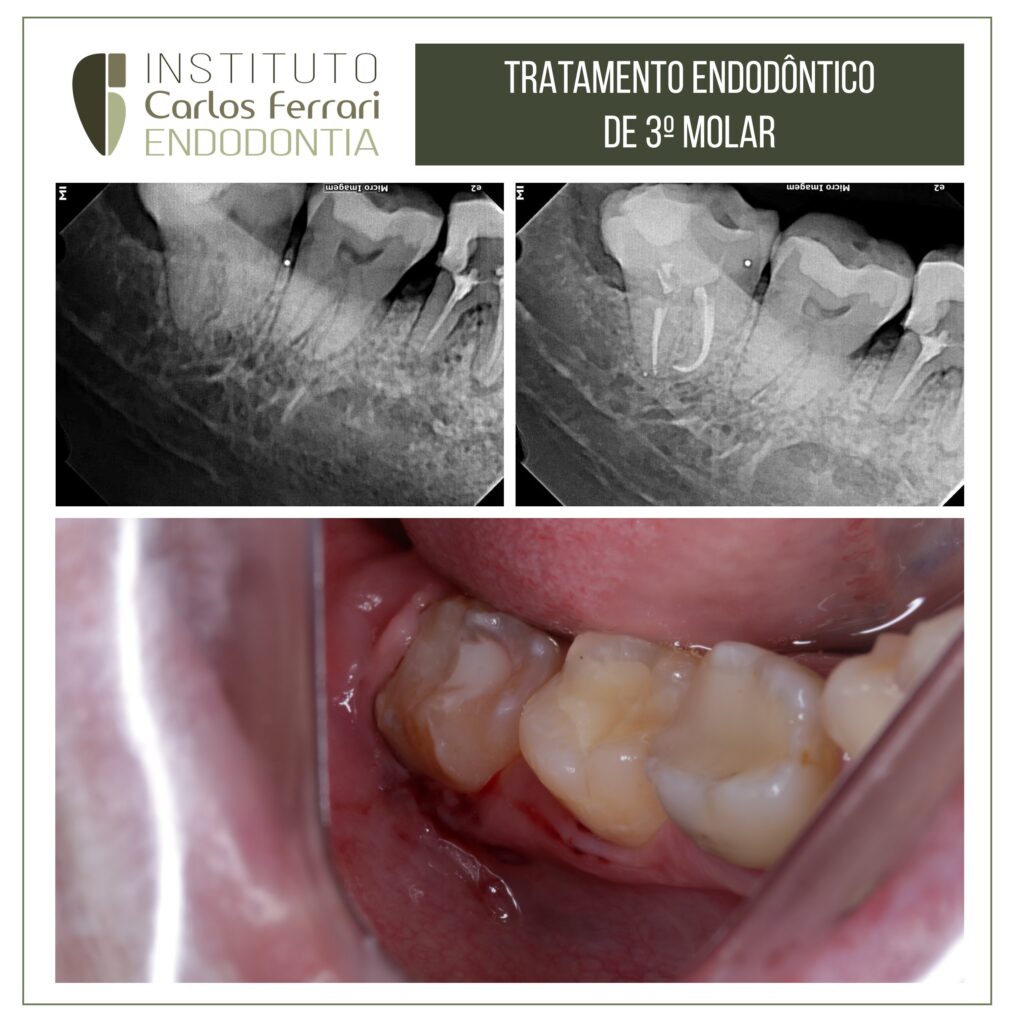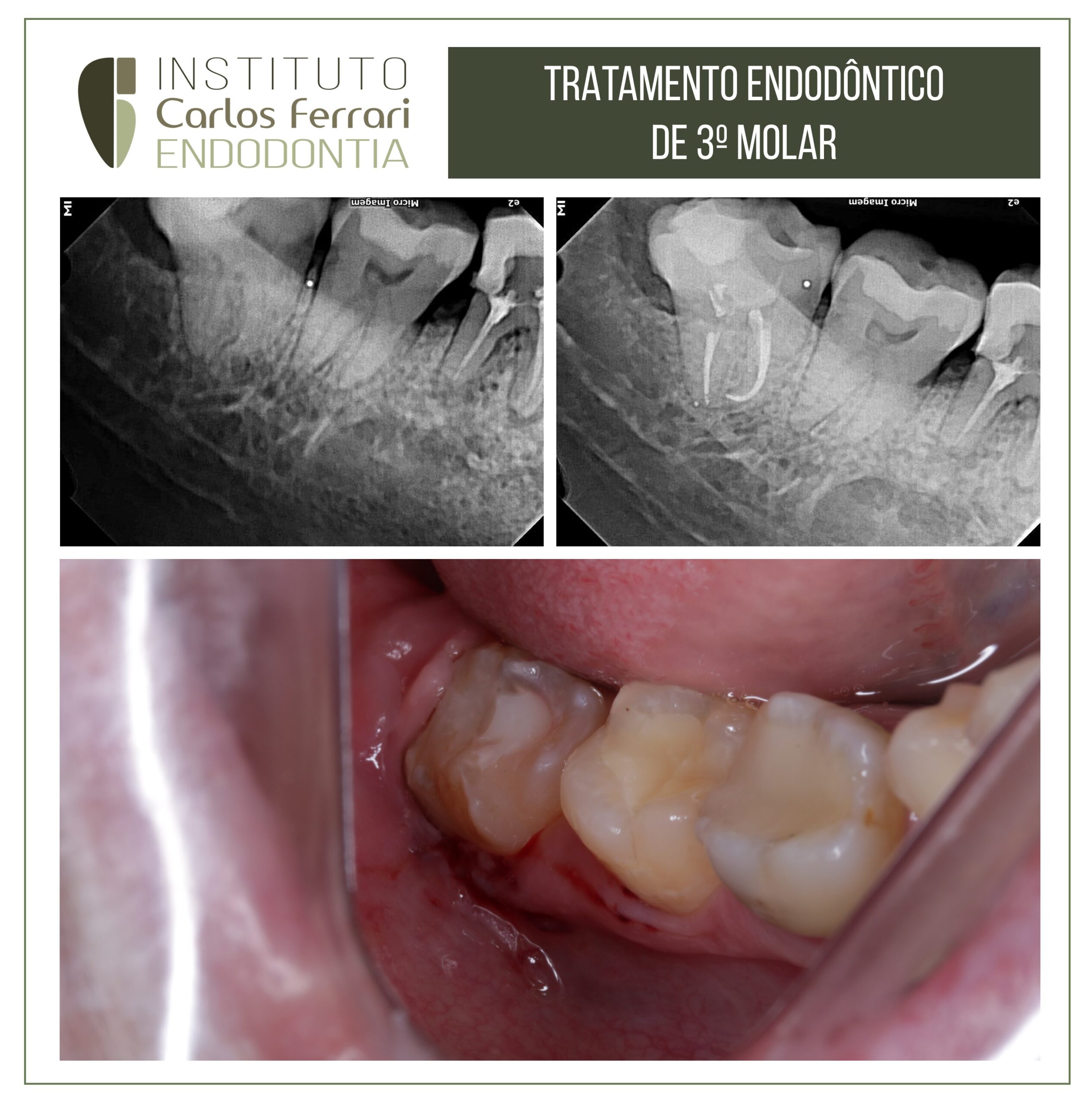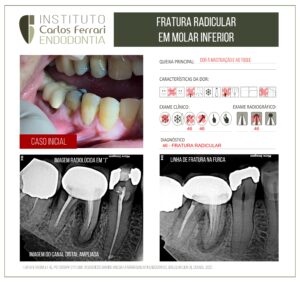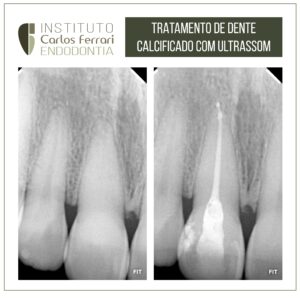Tratamento endodôntico de terceiro molar. Tratamentos endodônticos em 3ºs molares numa arcada completa são raros, principalmente em pacientes do sexo feminino, pela falta de espaço.
Neste caso, houve indicação porque o dente tem função mastigatória e irá receber futuro aumento de coroa.

In; Avaliação tomográfica de terceiros molares inclusos segundo classificação de winter. Rev. cir. traumatol. buco-maxilo-fac. vol.16 no.2 Camaragibe Abr./Jun. 2016
INTRODUÇÃO
A denominação dente Incluso é dada ao elemento dentário, que estiver totalmente encoberto por tecido ósseo e/ou mucoso, podendo ser visualizado somente através de meios auxiliares de diagnóstico, como radiografias ou tomografias, independente de estar em processo fisiológico de erupção ou sofrendo alguma obstrução física que o impeça de irromper. Nesse último caso, ele é subclassificado como Impactado. A inadequação do comprimento do arco dentário em relação ao espaço necessário para a irrupção de todos os dentes é a principal causa da impactação dentária.
Os dentes tornam-se frequentemente impactados porque o comprimento total do arco ósseo alveolar é menor que o comprimento total da arcada dentária, fazendo com que os dentes com erupção mais tardia não encontrem espaços para sua acomodação adequada.
O estudo da presença dos terceiros molares retidos e do posicionamento desses dentes reveste-se de importância para determinadas especialidades, como Ortodontia, Odontologia Legal, Odontopediatria, além da Cirurgia e, também, facilita a comunicação entre os profissionais assim como o planejamento cirúrgico que envolve tais dentes.
Segundo pesquisas, os terceiros molares são os elementos dentários, que apresentam maior frequência de inclusão, fato esse observado em uma grande parte da população.
Os terceiros molares, por apresentarem essa maior prevalência de inclusão, chamaram a atenção de muitos pesquisadores, entre eles George Winter, que criou uma classificação para facilitar a comunicação entre os profissionais e para fornecer ao cirurgião dentista uma forma melhor de planejar procedimentos cirúrgicos.
Winter (1926) classificou esses terceiros molares inclusos, relacionando a inclinação do seu longo eixo em relação ao longo eixo segundo molar: quando estiverem paralelos, estarão na posição vertical; quando o longo eixo do terceiro molar estiver em posição medial em relação ao longo eixo do segundo molar a posição será mesioangular; quando o longo eixo do terceiro molar estiver em posição distal em relação ao longo eixo do segundo molar a posição será distoangular; quando o longo eixo do terceiro molar estiver perpendicular ao longo eixo do segundo molar a posição será horizontal. Por outro lado, nos casos em que o dente incluso em questão estiver inclinado para vestibular ou lingual, serão classificados, respectivamente, como em vestibuloversão e linguoversão,e a última posição que é a invertida.
Para o auxílio e a correta aplicabilidade da classificação de Winter na Odontologia atual, os exames complementares têm fundamental importância para o diagnóstico, planejamento do tratamento clínico e proservação do paciente. Nesse contexto, as radiografias panorâmicas constituem-se em um método radiográfico prático e atual, que fornece uma visão global do complexo maxilomandibular, de toda a região dento-alveolar e estruturas adjacentes, sendo cada vez mais utilizada pelo clínico, com o objetivo de obter informações que proporcionem um tratamento efetivo, com menor incidência de complicações e redução de custo aos pacientes.
Em estudos que adotam a classificação de Winter e a radiografia panorâmica, constatou-se que as posições mais frequentes tanto na mandíbula quanto na maxila são, respectivamente, a inclinação vertical e mesioangular. Em outra pesquisa, entretanto, a posição mais frequente tanto na maxila quanto na mandíbula é a mesioangular, seguida da posição distoangular evertical.
Em pesquisa semelhante, foram encontrados resultados diferentes, em que a posição mais frequente para os terceiros molares superiores foi a vertical seguida da distoangular e mesioangular. Para os terceiros molares inferiores encontrou-se a posição vertical como a mais prevalente seguida da mesioangular e horizontal.
Tratamento endodôntico em terceiros molares.





